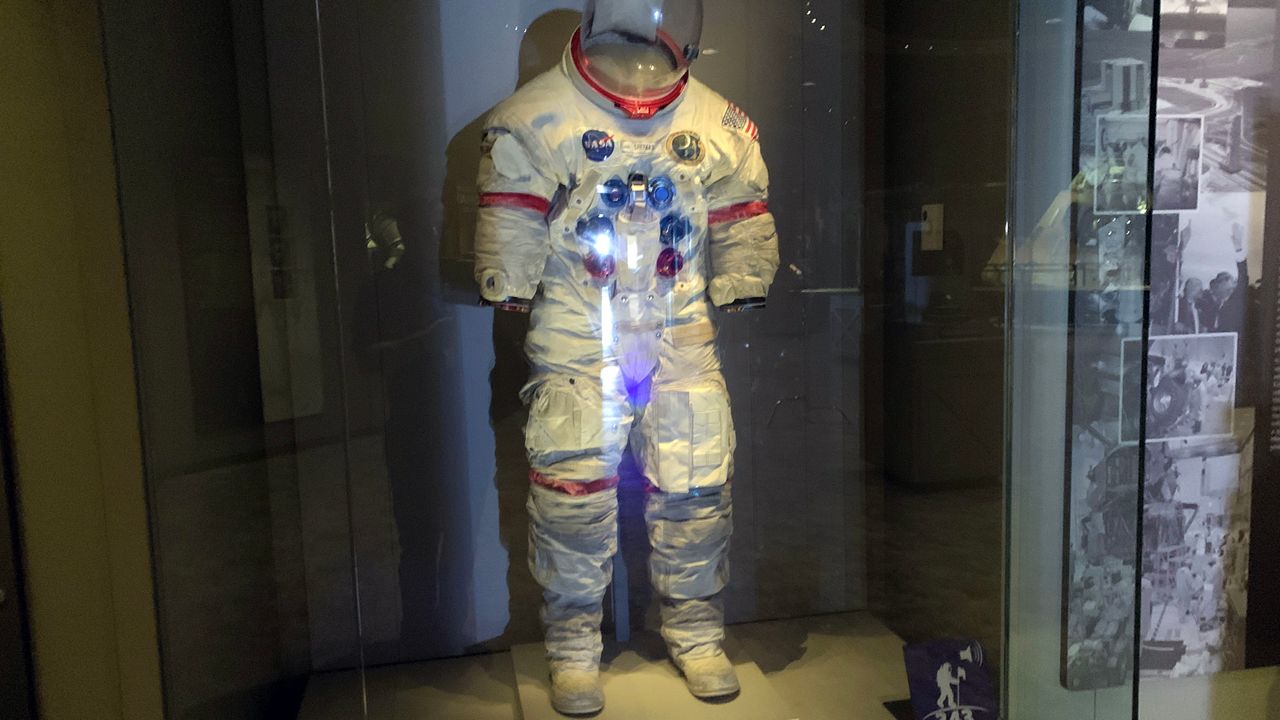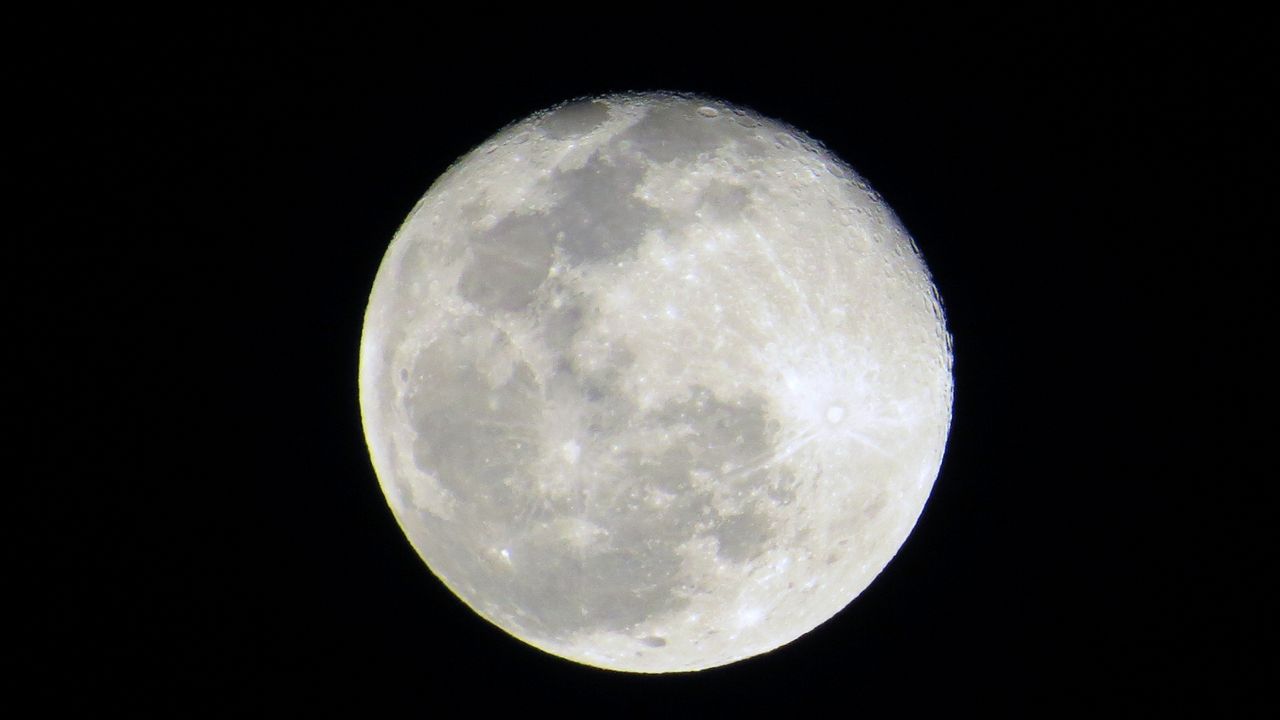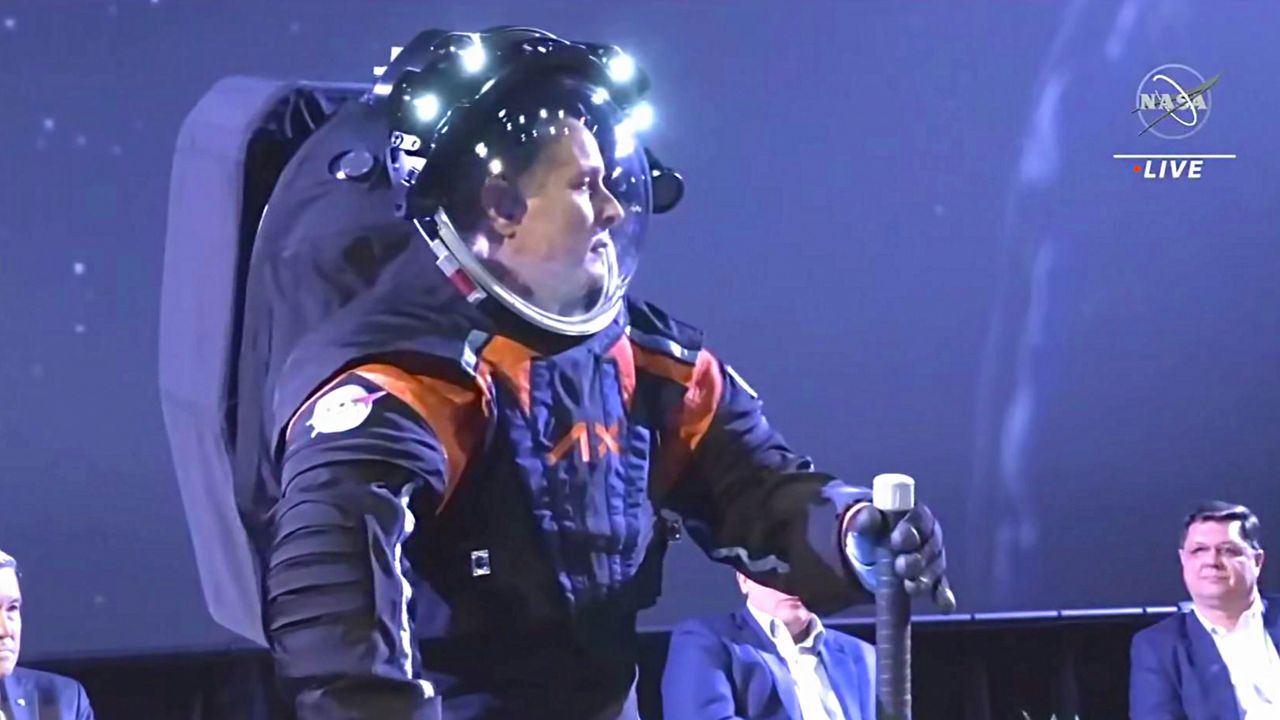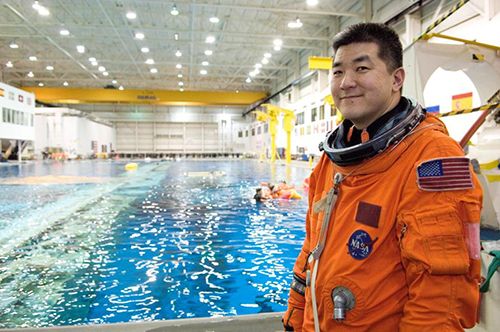When NASA announced that private space company Axiom Space was awarded the task of building the next-generation spacesuit for the Artemis III mission, not many realized the level of difficulty in creating a new suit that can withstand the moon’s harsh terrain.
After all, the new suits have to do more than look snazzy when the astronauts explore the moon’s South Pole region. And so far, these suits are quite different from the ones that came before them.
What You Need To Know
- Apollo mission spacesuits were damaged by abrasive lunar dust and several astronauts noted that moon dust was resistant to cleaning efforts; even vigorous brushing could not remove it
- Some of the health issues that the Apollo astronauts experienced itchy eyes and coughing
- Axiom Space explains some of the challenges and rewards of designing the new spacesuits
- Spectrum News is looking at our past during the Apollo 11 anniversary

Understanding the challenges moon dust poses
During the original six Apollo moon-landing missions, astronauts discovered that moon dust, also called lunar regolith or just regolith, caused a lot of issues for the crews’ spacesuits and lunar modules.
What many did not realize is that, because the moon does not have an atmosphere like her big brother Earth — no wind or water — there is nothing to “smooth” the dust. So, it becomes very sharp and abrasive. But that is not all.
“There are also glass particles in the lunar environments from meteorite impacts and volcanism. The glass particles are extremely sharp and are very tiny on the millimeter scale size and smaller and can be stirred up during robotic and human exploration activities or released by natural processes such as meteorite impacts,” commented Tim Hall, the strategic communications manager for the Extravehicular Activity and Human Surface Mobility Program at NASA’s Johnson Space Center.
Hall acted as spokesman for the group of NASA experts who answered Spectrum News’ questions about the new spacesuits being developed and the challenges that regolith poses.
The dust also ate away at the boots of the spacesuit, destroying the seals of sample containers and creating health issues for the lunar visitors of the Apollo program, stated Hall.
“When astronauts were entering and exiting the lunar module, dust got everywhere — it clogged mechanisms, interfered with instruments, caused radiators to overheat and even tore up their spacesuits. Apollo astronauts noted that lunar dust particles readily stuck to surfaces such as spacesuits, optical lenses, and thermal blankets, causing numerous problems,” explained Hall, who added that the dust was resistant to cleaning efforts.

Designing new moon suits
Mark Greeley, Axiom Space’s Extravehicular Activity (EVA) program manager, said his company has all the information it needs for designing the new suits, named Axiom Extravehicular Mobility Unit (AxEMU).
“Axiom Space is using all available data in the development of our new EVA spacesuits and ancillary hardware. Regarding Apollo, we included a former NASA Apollo EVA engineer on our Board of Advisors to work with our teams on the historical relevant to EVA,” explained Greeley to Spectrum News.
Due to the “proprietary” nature of creating the suits, Greeley could not go into great detail about Axiom Space’s design of the new suits, but he did say the company’s designers are evaluating different options for dealing with the lunar regolith.
One of the challenges the designers will be working on for the lunar spacesuit is dust mitigation. Citing the propriety nature of creating the suits, Greeley can only reveal the new suits will have dust mitigation and the suits will somehow “prevent this issue.”
If the new suits can handle the dust problem, it will mean the Artemis astronauts will have an easier time than their predecessors.
When the Apollo astronauts returned to their lunar modules after a stroll on the moon’s surface, the dust would cling to them, causing them to cough (since it went into their lungs), sneeze and even suffer from itchy eyes, stated Hall.
However, NASA pointed out that the Apollo astronauts did not suffer any long-term health effects and their symptoms were gone once they returned to Earth.

More than a fresh new look
Most people remember the bulky, cumbersome spacesuits the Apollo astronauts wore as they were bouncing around, and sometimes falling, on the lunar surface.
In fact, Hall noted these spacesuits had limited mobility for the moon visitors and caused challenges for them to maintain their balance.
Greeley said the new suits will allow a lot more movement.
“Yes, Axiom Space has invested much time and effort into our Pressure Garment System (PGS) design which incorporates many features that increase mobility, minimize mass, and will provide a great fit for the entire astronaut crew population,” he said.
Hall added that Axiom Space’s AxEMU suits “will make it easier for astronauts to kneel down stably in one motion to work close to the ground — which wasn’t much of an option for Apollo astronauts.”
Greeley also revealed that NASA provided Axiom Space with detailed requirements for the suits that must be met. He said his company is appreciative of the space agency giving access to data that will help with the design and feel of the space suits.
And despite the demo space suit that Axiom Space showed off being a dark grey color, the finished product will be white. Spacesuits are white because the color helps reflect heat.
In addition, Greeley was able to share some of the new equipment and tools the suits will have for the Artemis III astronauts.
“There are a variety of hardware items and systems integrated into the suits, from fans and pumps to computerized diagnostic systems for health monitoring. Essentially, everything you need to keep you alive for more than eight hours and monitor suit health,” Greeley revealed.
He admitted that there were some challenges and easier aspects when designing the new space suits.
“Our team certainly has dealt with challenges but that is par for the course. Although Axiom Space had already begun efforts for designing an EVA spacesuit to support our commercial spacesuit, we had to rapidly scale personnel and facilities to support all that is required by the (NASA Extravehicular Activity Services) contract,” according to Greeley.
He did add that some of the easier parts of the job are having the right people for it.
“Fortunately, most of our internal leadership team have spent their entire careers working (on) space suits,” he said, adding that because of this team, it has allowed Axiom Space to move quickly in the development of the new spacesuits.
“This has enabled us to move rapidly in development, applying lessons learned from previous programs and projects to minimize overall development risk,” he added.
Putting the suit through its paces
 NASA astronaut and engineer Daniel Tani stands next to the NBL. (NASA)
|
Last year, NASA awarded Axiom Space the task of building these next-generation spacesuits for $228.5 million. Greeley said that his company’s design is cost-effective and more user-friendly than the current suits that are used today.
And user-friendly seems to be the key. But that also requires testing the suits, which has already started.
“We have already begun testing our first suit. We will put our suits through a variety of test events that mimic the space environment. This includes performing testing in NASA’s Neutral Buoyancy Laboratory and thermal vacuum chambers that expose the suit to the temperatures and pressures experienced in space,” said Greeley.
The Neutral Buoyancy Laboratory is at the NASA Johnson Space Center in Texas. The laboratory houses a giant pool where astronauts go to train for spacewalks, among other things.
Greeley said the finished product will hopefully be the same as the demonstration suit, with just a few items improvements and whatnot.
“Inevitably, as we continue testing we will find things we want to improve and fix. There will be minor updates and changes, but the suit we revealed looks very much like what will fly on the moon,” he said.



